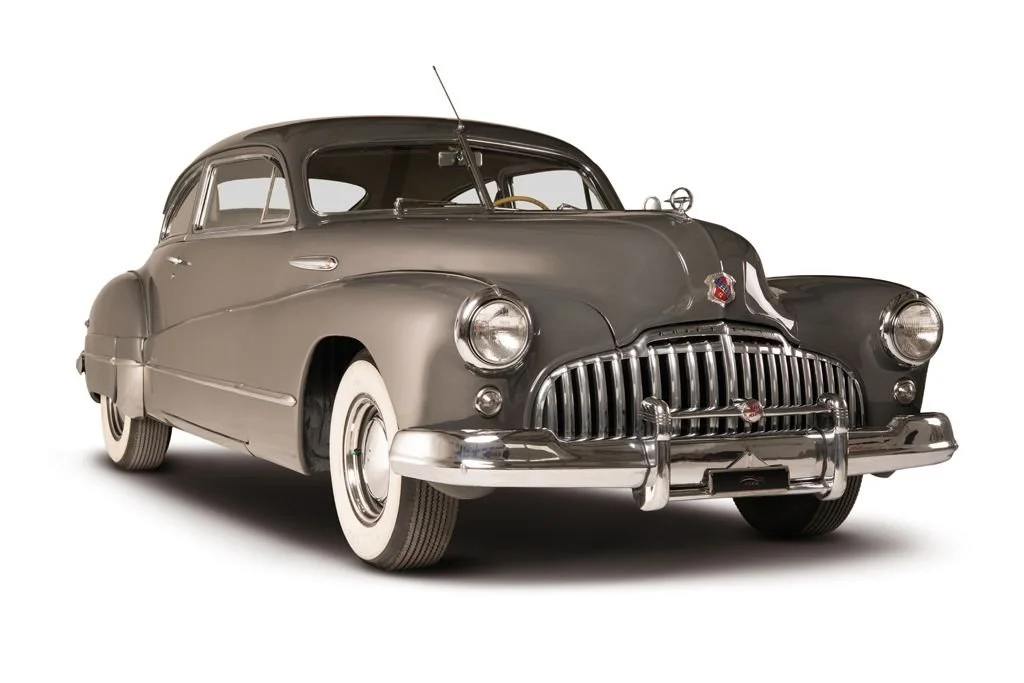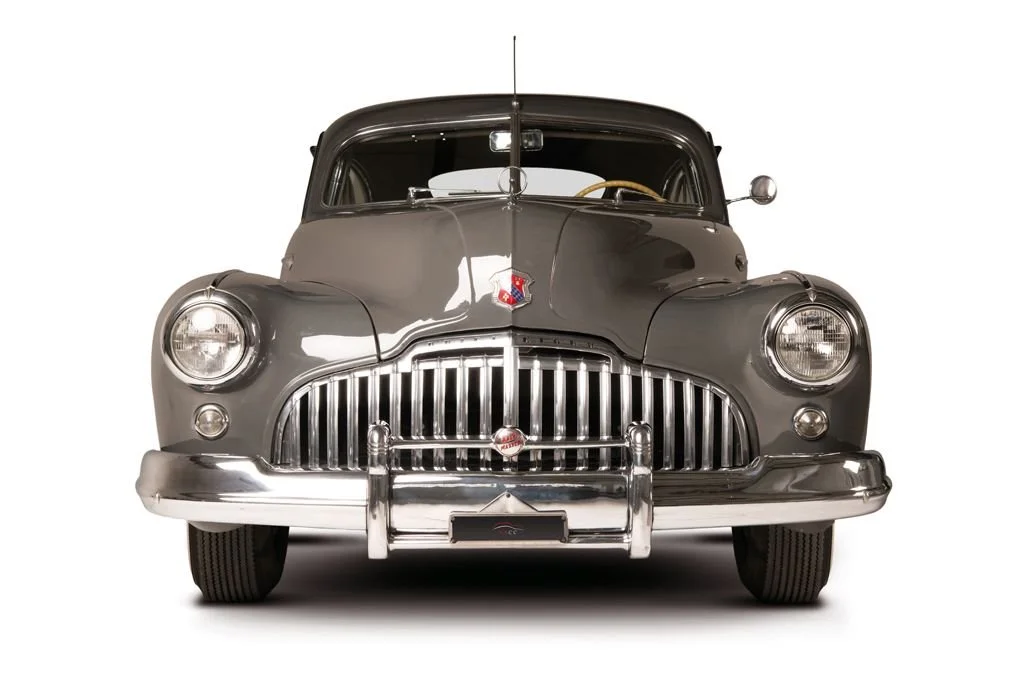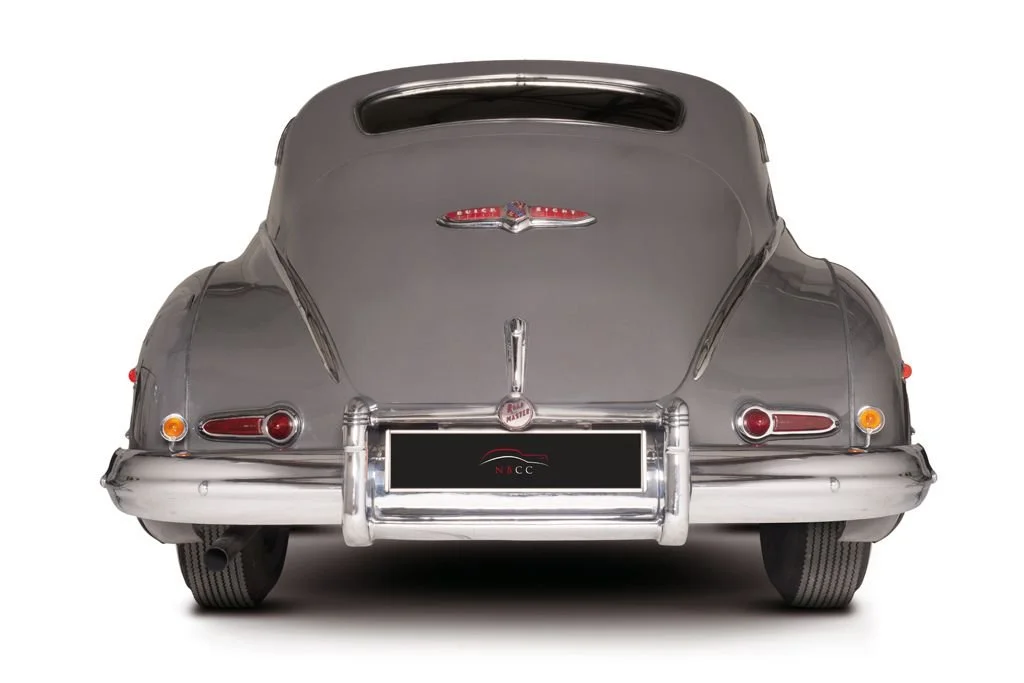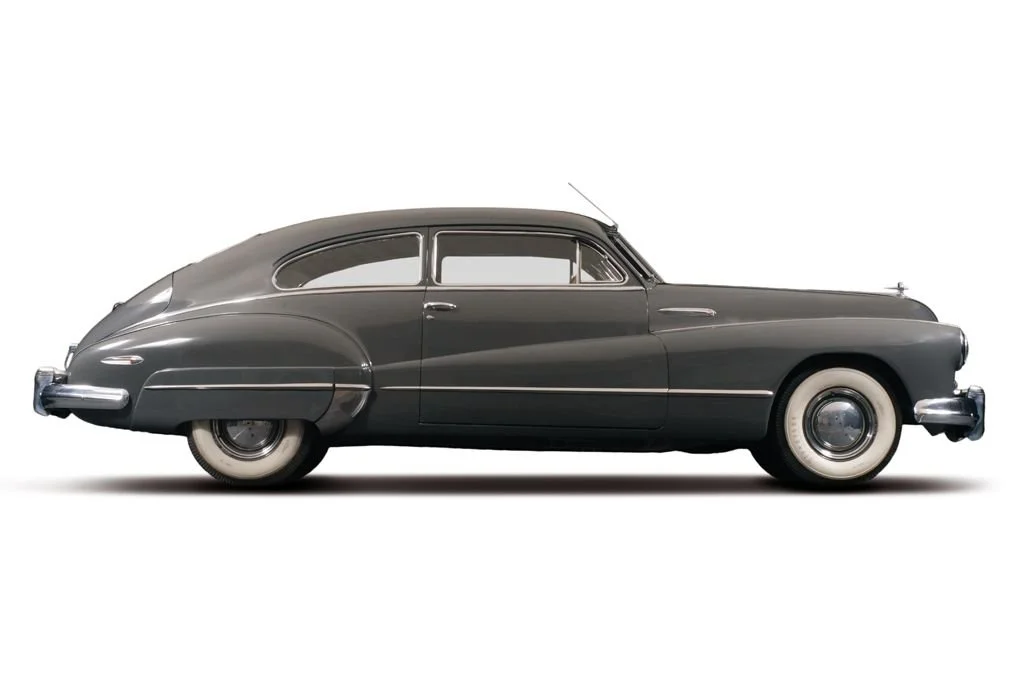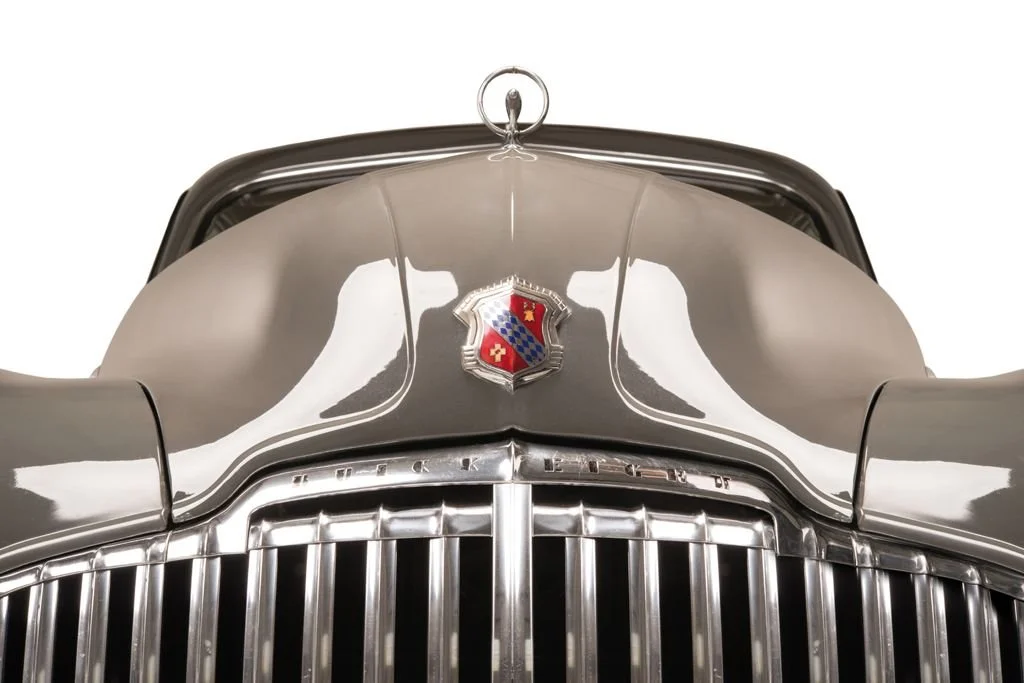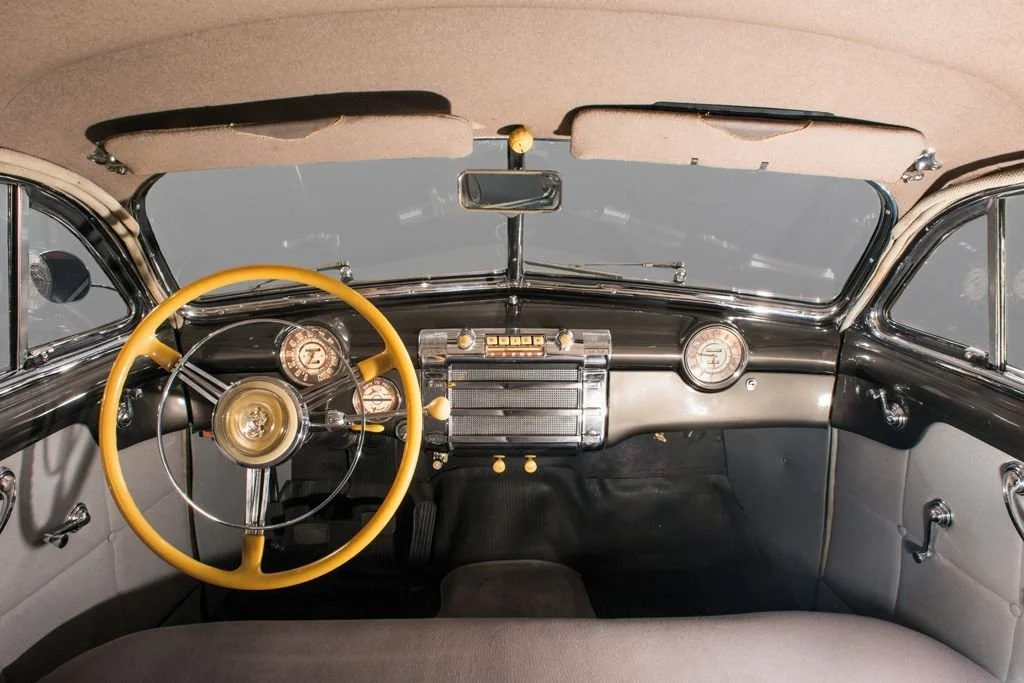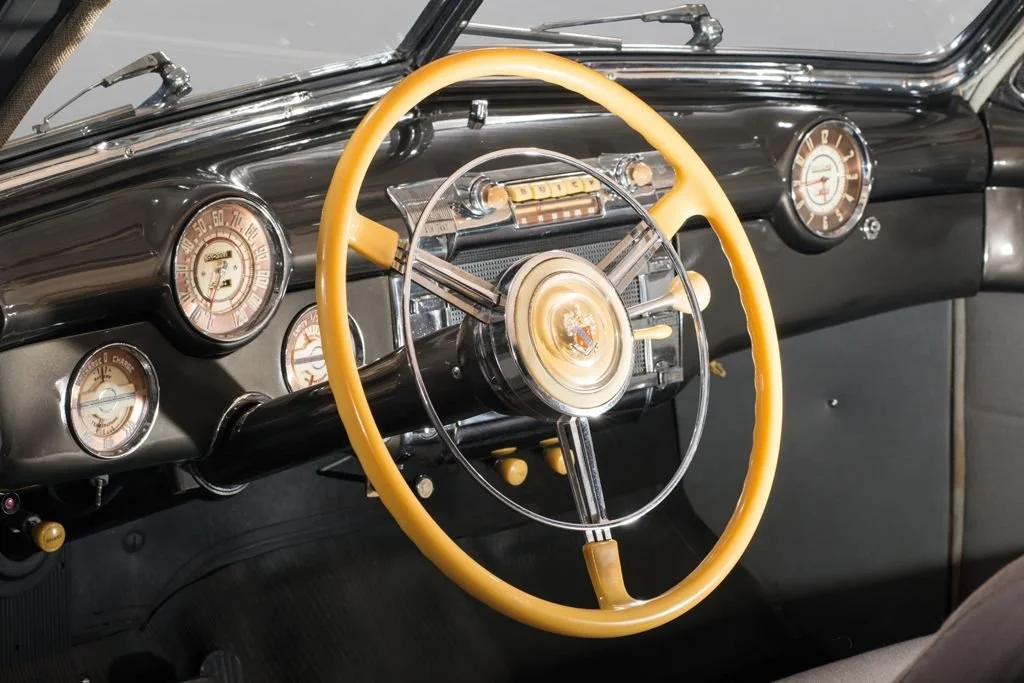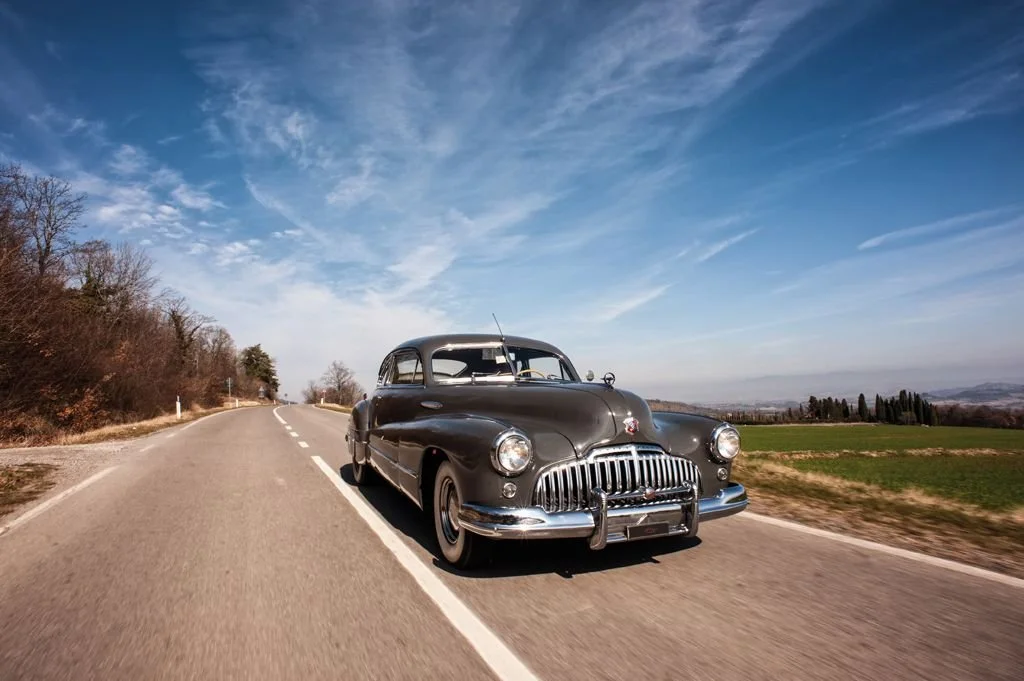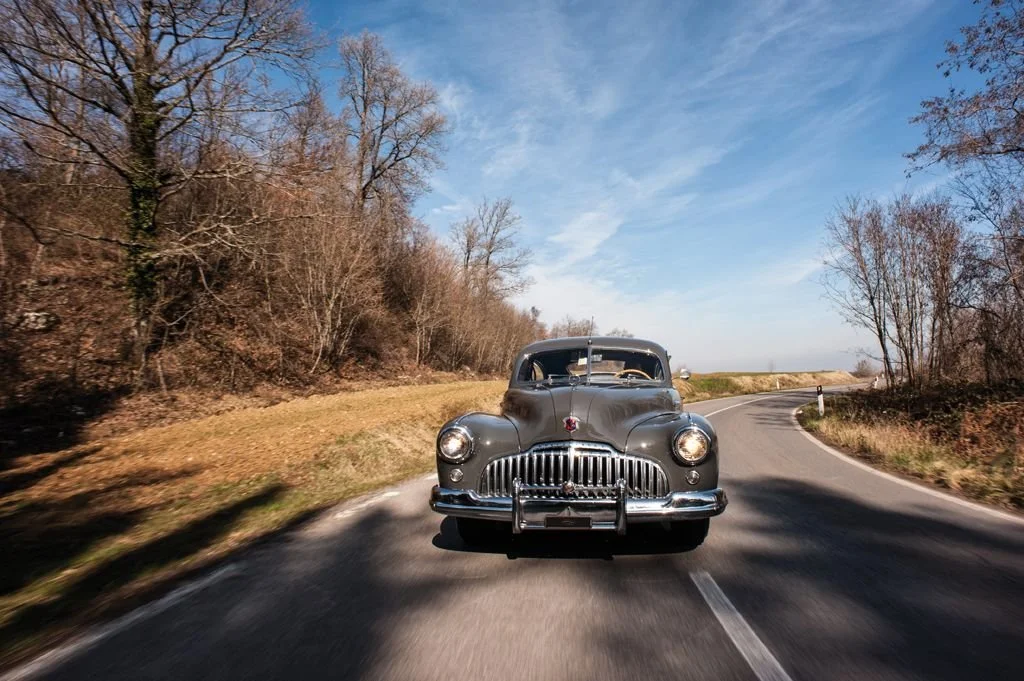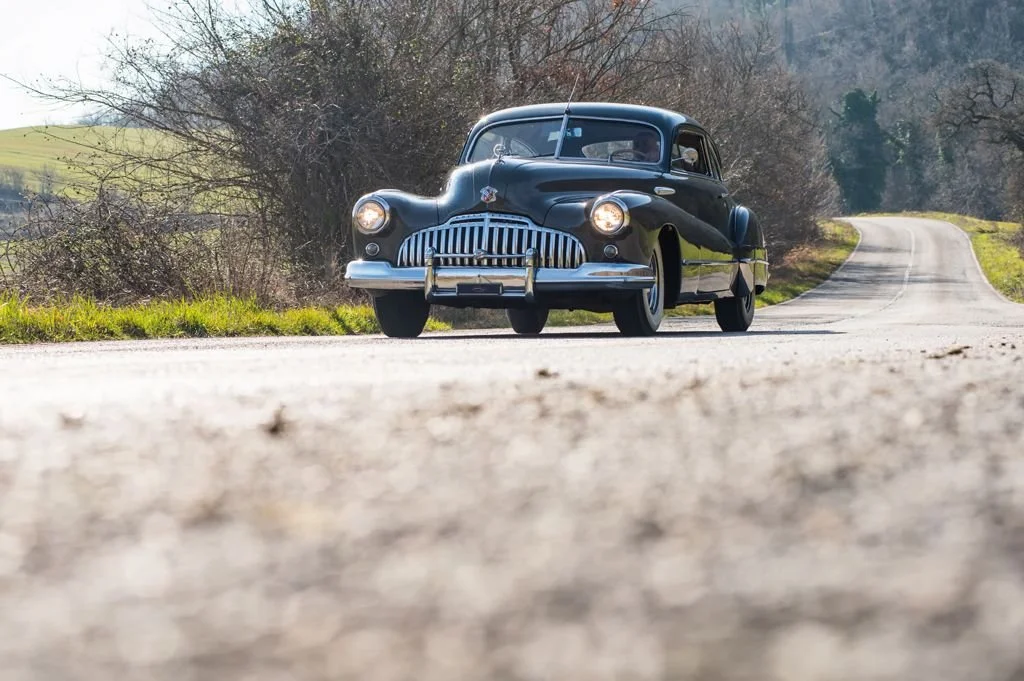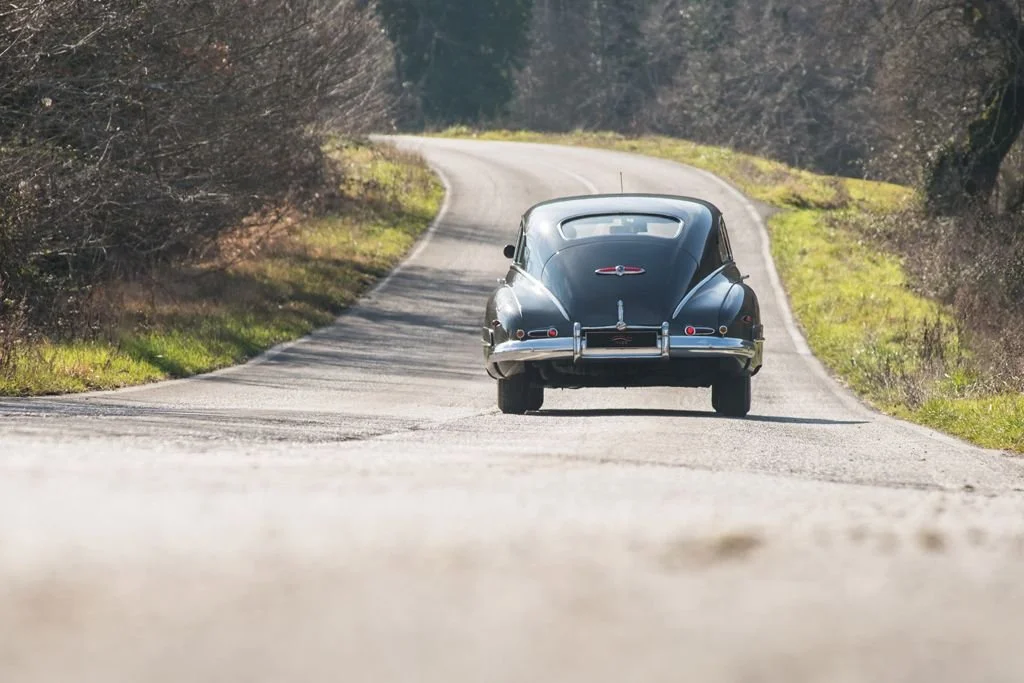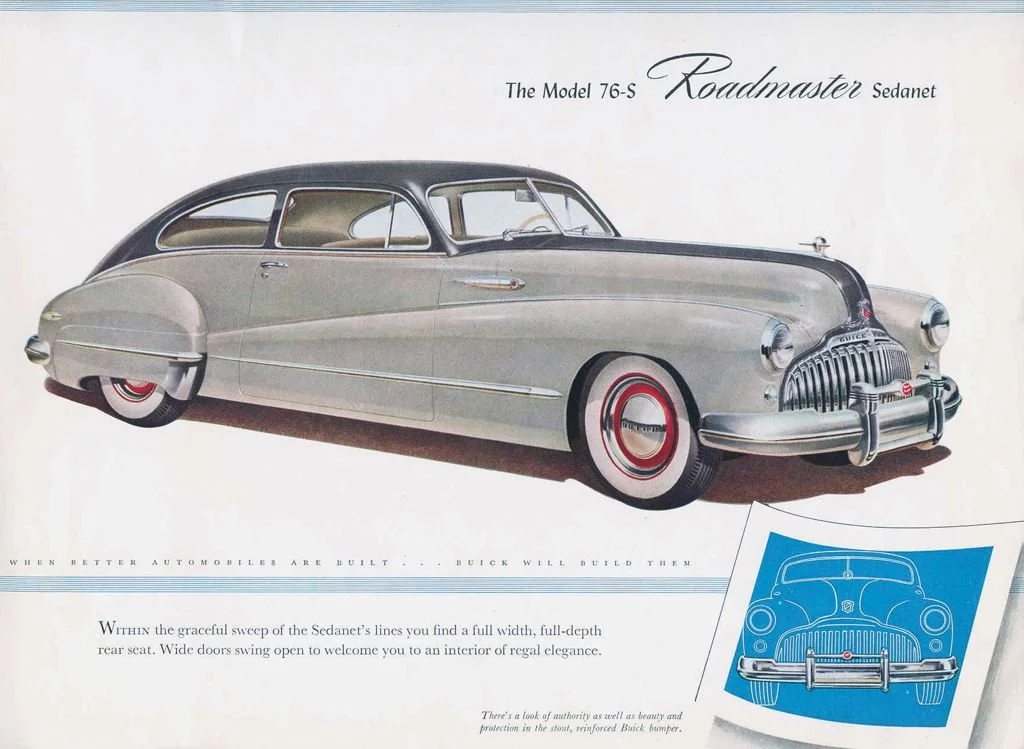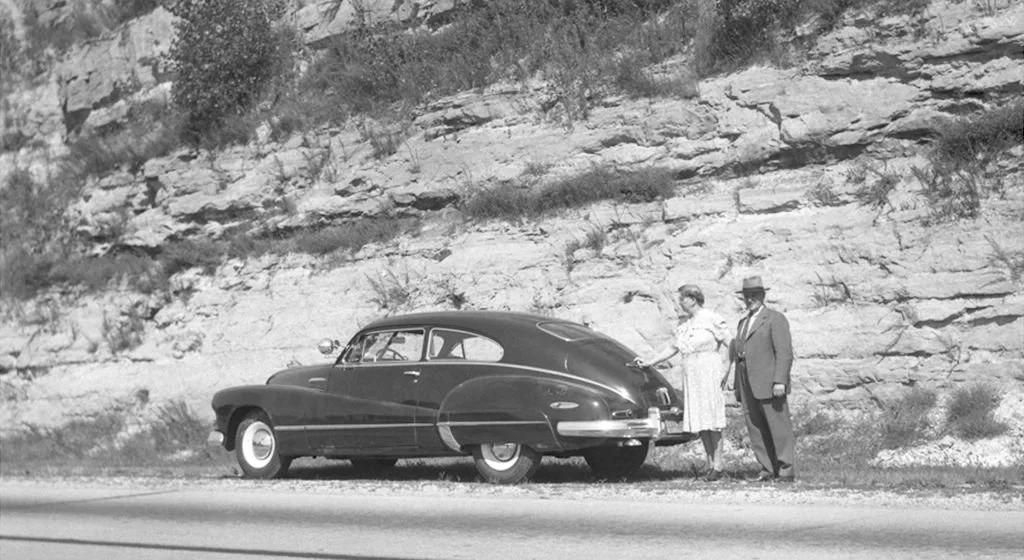-
One of the 107 Buick Roadmasters produced for the export market, out of a total of 20,649 total produced, found its way to Italy. With roads in terrible condition, no domestic car production, and no plants where cars could be assembled, American cars were the only way for people to get around. Affluent people, of course, since the price of a new Buick could equal that of a new home. Nonetheless, many arrived here and were subjected to all kinds of uses.
This Buick Roadmaster Sedanette Model 76S had been used by smugglers to transport boxes of cigarettes and other prohibited items from Switzerland to Italy. After being confiscated by the Customs Border Patrol, the Buick, with the antique Italian license plate “Varese 28745”, was auctioned and purchased by Mr. Santovetti, a longtime close friend of Mr. Nicola Bulgari. A few years later, Mr. Santovetti decided to gift the car to the Nicola Bulgari Car Collection in the Eighties (and getting a Rome license plate). The Buick needed a complete restoration, which was performed in Rome in the Eighties by Mr. Bulgari’s talented crew. -
Company
Buick Motor DivisionWheelbase
129inInterior trim
Grey clothBrakes
front and rear drumsMake
BuickLength
217.7inEngine
inline 8 - 320.2cidTires
8.20x15Model
Roadmaster 76SWidth
78inCarburetor
1 Stromberg AAV26 or Carter 609Original Price
$2,014Body style
2-door SedanetteWeight
4,095lbsHorsepower
144hp @ 3600rpmProduction
8,226Model year
1946Exterior paint
GreyTransmission
manual 3-speed syncro-mesh -
It was October 7, 1945, when Buick’s long-awaited 1946 models were announced. They weren’t much different from the 1942 cars whose production had been halted by government order three and a half years earlier. The idea of major styling changes for the postwar market, especially in the Super and Roadmaster models, would have been foolish, because they had been completely restyled for the 1942 model year, when General Motors’ new C body was introduced. The main mechanical difference in the 1946 cars was the elimination of “compound carburetion”, the dual two barrel setup so highly publicized in 1941-42. Forerunner of the modern four-barrel carburetor, the “compound” had raised the horsepower of the larger Buicks from 140 to 165 horsepower, even more than the V8 Cadillac engine. Unfortunately, it caused many problems for Buick owners, including excessive fuel consumption. The postwar Roadmaster, with a single two-barrel carburetor, still had 144 horsepower, almost ten more than the Chrysler New Yorker, but nine less than Cadillac. By 1946, the number of available models was greatly reduced, with the elimination of the Century and the Limited series. Buick’s price leader, the Special series Super and Roadmaster, were continued. The Special was available in just two models, two and four door fastback, and rode on a 121 inch wheelbase chassis. As a mid-priced series, the next step up the ladder was the Super, with a three inch longer chassis and the same 248 cubic inch engine that was shared with the Special. At the upper end of the range there was the luxurious Roadmaster, built on a 129 inch wheelbase and sporting a 320 cubic inch straight-eight engine. Body types were available in Sedan, Sedanette, Station Wagon and Convertible.
The styling changes for 1946 were minimal. There was the obligatory revision of the grille, and this year marked the first appearance of the “bombsight” hood ornament that would be a Buick feature for many years to come. More important for exterior styling was the adoption of the “flow through” front fenders on the Super and Roadmaster models, a feature that emphasized the already long body by connecting the leading end of the front fenders with the rear fenders in a long sweeping line. This feature had been conceived by General Motors styling studios, and was offered to Cadillac in the first place, and after their lack of interest, it was taken up enthusiastically by Harold Curtice, Buick’s General Manager. The first models to come off the assembly lines were the Super, and the Roadmaster followed shortly. Immediately after the war, many materials were not available, like white-wall tires and chrome for the bumpers, so black-wall tires and wooden plank bumpers were substituted for the time being, until the correct parts were available from suppliers. Buick had gained a very good reputation for performance and reliability all around the world, so when the war ended, with most of the car manufacturing plants in Europe destroyed, it was only natural that many Buicks and other American vehicles were sent to Europe. Export models were produced in good numbers, almost 9500 were scheduled for overseas sales out of the 213,000 cars produced overall.

